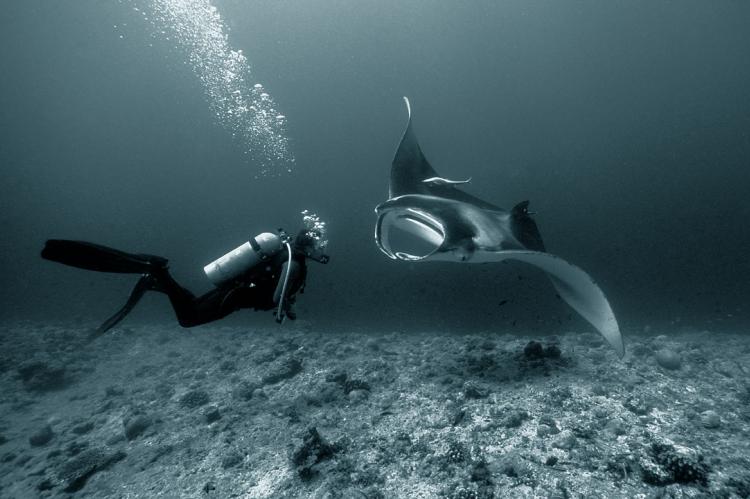Communication with manta rays "within grasp"
Manta rays communicate in a complex language we are just about to understand, German scientists find. Soon we may even be able to communicate with them. In a startling new discovery, researchers have uncovered that groups of giant manta communicate intensely between themselves by means of what is deemed to be a language made up by highly coded electrical impulses.
These impulses are transmitted in complex patterns which researchers—after painstaking investigation aided by decoders and software from the intelligence community—have now demonstrated illicit an underlying grammatical structure not unlike that of human languages and that we are now on the brink of understanding these communications.
Using a grid of external electrodes attached to the head of a group of adult mantas which were then tracked and monitored over great distances in the western Pacific by the use of satellite tags, the group of scientists led by Dr Primera Avril from the Etology Department at the Münchhausen institute in Blocksberg, Germany, first discovered that groups of manta rays kept in touch and communicated even over long distance coordinating their movements somewhat similar to a squadron of search planes spreading out to cover a larger area.
Adapted receptors
Dr Avril also discovered that a group of specially adapted ampullae of Lorenzini—the small electrical receptors otherwise most known from sharks which use them to detect prey hiding under the sand—served as the listening devices.
How the rays were able to also transmit signals was a far bigger challenge and a big mystery at first but a detailed analysis of the data coming out of the electrodes soon pinpointed to originate from an otherwise unassuming little organ of hitherto unknown function located behind the snout no bigger than a walnut. This little lump of tissue consists mainly of tightly bound alternating layers of fat, connective tissue and some special muscle cells in a manner not unlike that of the battery organs in electrical eels.
We could soon talk with mantas
Needless to say, this has been a most startling revelation. Many divers encountering these gentle giants in the water have often felt that there was some unique intelligence behind those big dark eyes seeking eye contact with people. And only now are we starting to get an inkling of how intelligent and complex these gracious creatures really are. The great apes can learn to use a limited symbolic language when they are under intense training from a human, sea mammals and birds also demonstrate high levels of intelligence and social coherence facilitated by communication. But it seems like the mantas are going off the top of scale as they seem to even be discussing things between them on an abstract level.


